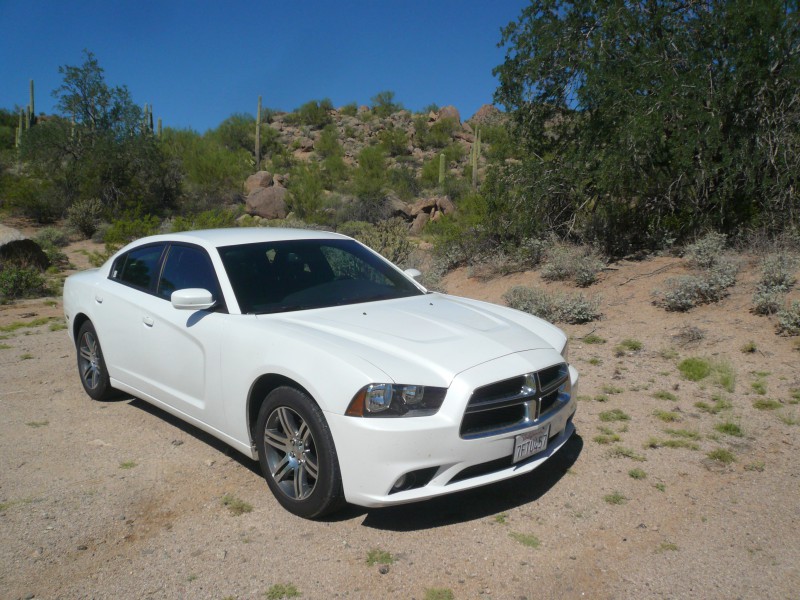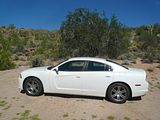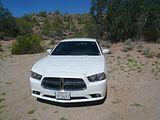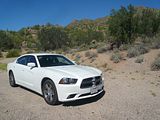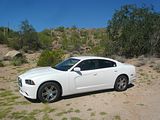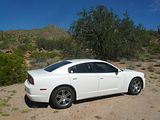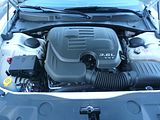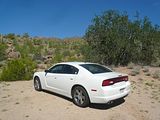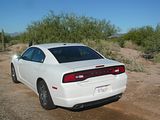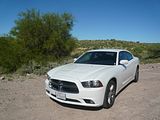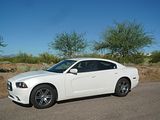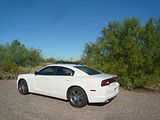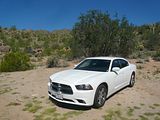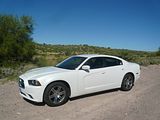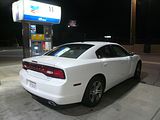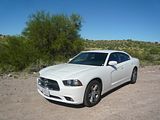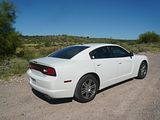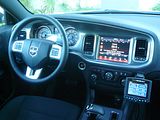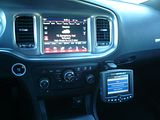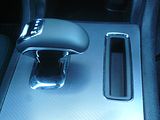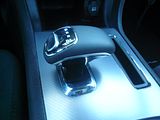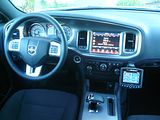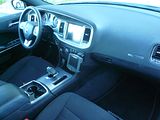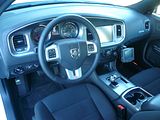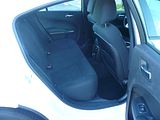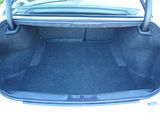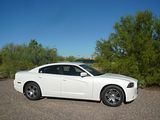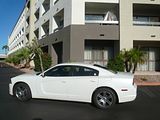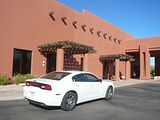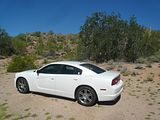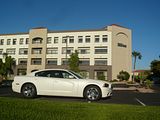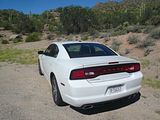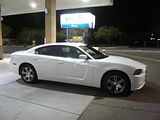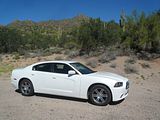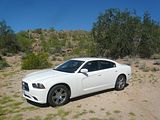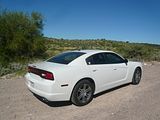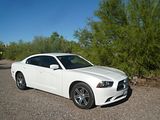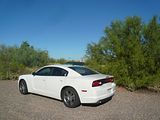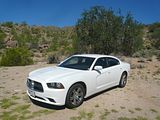
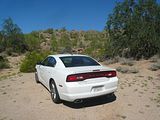

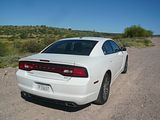
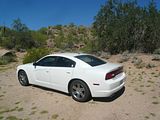
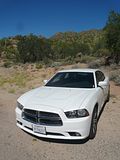


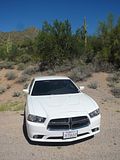

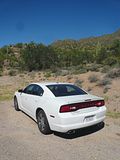
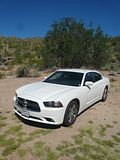
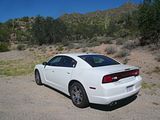
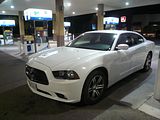


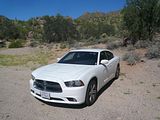
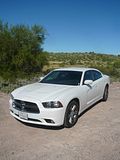

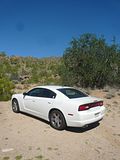
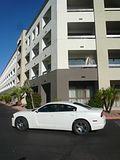
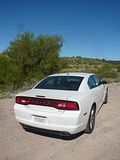
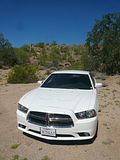
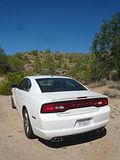
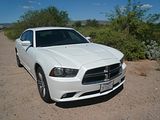
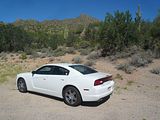

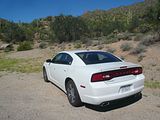
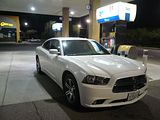
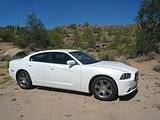
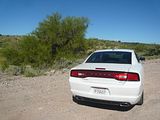
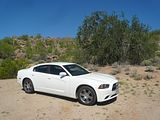
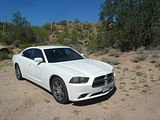
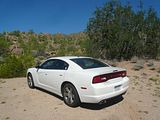

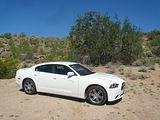
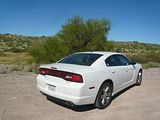
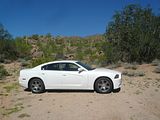
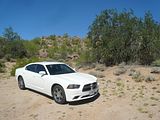
It used to be a case of “be careful” when selecting a V6 engined Charger, as two different ones were available. Entry level cars had the 2.7 litre unit and there was also the long running 3.5 litre. Anyone getting one of the former was likely to be massively disappointed, whereas the larger unit was at least reasonably up to the task. That all changed when the 3.6 litre PentaStar came in, as not only was this a massive improvement on what went before, but it became the base unit in the range which continued to offer the well-known 5.7 litre Hemi V8 and its even more potent 6.4 litre brother. With 292 bhp on offer, this is a lot of oomph even for what it is quite a large and heavy car, and it is immediately apparent as you head off down the street that the Charger is going to prove to be quite a cut above your average rental car. More recently, Dodge replaced the old 5 speed automatic gearbox with a new 8 speed unit, and the combination of this and the refined engine were probably the things which really endeared me to this car. The transmission is silky smooth, with truly imperceptible ratio shifts, and it does mean that for steady speed cruising you can have a nice relaxed time of things, with the engine spinning at less than 1800 rpm at freeway speeds. There is a rather unusual gear selector though. A small stubby affair, it does not have the predefined positions in a conventional gate that used to pertain, but you simply press the button on the top, and flick the lever back a position to engage either reverse, or drive, and you know which gear you have selected because there is a transmission selector listing in the centre of the instrument console. Although I got better at using it, it was not completely foolproof, especially when going from forwards to revers and back again, though I am sure with a bit more familiarity, you would get totally used to it. Apart from that, though the Charger goes well. Very well. It feels urgent, and once you flex the right foot a bit, it turns out that it is, too. It is very smooth with it, so you need to keep an eye on the speedometer to avoid attracting undue conversations with the Sheriff or the Arizona Police Department. At launch, Dodge did suggest that this unit is more potent than the 5.7 litre Hemi which was in the first generation Charger. That means that the current Hemi, with an additional 78 bhp must be extremely rapid, though it does retain the five speed transmission and those who have drive it say that this can be an issue as the gap between the ratios is wide, which is not the case with the eight speeder. This level of potency does not bear too heavy a price at the fuel pump, I was pleased to discover. In 188 miles, a mix of freeway and urban driving, I averaged 27 12 mpg US, which equates to 31.74 mpg Imperial, which is pretty good for a car of this size and power, and largely, I suspect down to the high top gear ratios.
The good news does not stop there, as the other driving characteristics are surprisingly decent, too. The steering is well judged, with nice weighting and a precise feel to it, far more so than was the case with the first generation model, and the handling, in as much as I could test this on the public road and indeed the roads on which I travelled was also not bad, making the car feel more nimble than its size would suggest might be the case. It’s a rear wheel drive car, so that means no understeer, and there seemed to be plenty of grip, which is what you would hope, as this chassis clearly has to be able to cope with far more power and torque than you get in the V6 cars. It rides very well, too, smoothing out the few uneven surfaces of Arizona’s generally well presented roads, and it stops precisely with no issues from the brakes. There is a foot operated parking brake, in the American tradition. The Charger is quite high waisted, and the windows are not that deep, and with a wide C pillar, you might fear that visibility would be a problem, but thanks to generously sized door mirrors, I did not find it that hard to manoeuvre the Dodge to where I wanted it to be.
The really weak link on all Chrysler Corp products until very recently was the interior, every single one of which looked particularly cheap and unpleasant. The cause was not helped by a very straight edge design that Dodge in particular tended to adopt with things like the shape of the instrument binnacle. This was one of the first things that new owners Fiat attended to, right across the range with a significant improvement in material quality as well as new designs for the dashboards and the door casings. Certainly there is nothing to complain about now, bearing in the mind the price point and target market of the Charger. It’s not quite up to Audi levels of quality yet, but it is a darn sight closer than ever before. The impression when you open the door is now good rather than the mix of revulsion and despair that used to prevail. A large moulding covers not just the instrument binnacle but goes right across the centre of the dash to house the colour display screen, before swooping down to leave a lower area in front of the passenger. There is a sort of faux milled aluminium look inlay which, thanks to being on the grey side of things rather than unduly shiny probably adds to the ambience rather than detracts from it, and the red backlighting also helps matters, as does a select use of chrome highlighter rings and inlays. There are leather inserts on the door casings. The instrument cluster contains just two dials, a rev counter and a speedometer, with smaller water temperature and fuel level gauges inset in the bottom of the larger dials. They are clear and unfussy, proving easy to read. Between them is a digital display area, and you can select what is presented in his by using the selector buttons on the left hand steering wheel spoke. The buttons and operation here are not quite the same as they were in the new Chrysler 200 I sampled just the day before, but they were easy to use and pretty intuitive. They allow you to see all sorts of things from a digital representation of your speed, which you can convert to km/h by pressing one of the buttons, trip averages for speed and fuel consumption, various vehicle status displays such as the temperature of the oil, or what the audio unit is tuned to. There is only one column stalk, on the left of the wheel, which does indicators, and by twisting the end of it, the wipers. Lights function from a rotary dial on the dash to the left of the wheel. Centre of the dash contains the standard 4.3″ colour uConnect display unit, which is touch sensitive, meaning that you can select audio channels and wave lengths, including satellite radio from this, rather than the array of knobs and buttons that are sported by some cars. It also has plenty of other functions including many of the climate control settings, the seat heaters and a lot of vehicle info and configuration options. Unlike some systems of its type, it was very easy to use, and extremely intuitive. Beneath it are a very simplified set of audio controls and just two dials for the dual zone climate control. As with an increasing number of cars, there is a keyless ignition system, with a Start Engine button to the right of the wheel, so as long as the key is in the vicinity, the car will fire. This is always convenient when hopping in and out whilst doing photos of any test car.
The seats were covered in a cord like trim which was pleasant to the touch and looked more durable than materials that I often encounter. Adjustment was electric, with switches on the side of the seat, and I noted that there were heaters fr both front chairs for those who want to warm their behinds in winter. The column adjusts up/down and in/out, so the perfect driving position was easily found. The Charger is a full-sized car, and that really shows when you look at the amount of space inside. The rear seat is very roomy, though with a sizeable transmission tunnel and a front centre console that comes well back, a middle seat occupant would have to sit with legs astride this, which may not be that comfortable. Leg room is very generous, even with the front seats set well back, and despite the sloping rear roof, there is plenty of headroom. There is a central drop down armrest, which has two cupholders in its upper face. The boot is a good size, too, long from front to back, deep and wide, and the space can be extended by pulling the rear seat backrests forward. There’s not a lot of space under the boot floor for extra bits and pieces. Inside the cabin, there is a split level glove box, a deep cubby under the central armrest, a small recess in front of the gear lever and bins in all four doors. Rear seat passengers get map pockets in the back of both front seats.
Four basic trim groups are offered: the SE, the SXT, the R/T and the high-performance SRT. There is only one SE model, at the base of the range. SXTs come in standard SXT guise and SXT Plus. Above that are the V8 engined cars: R/Ts come as the straight R/T, the R/T Plus, the R/T max and the Road/Track. Sitting at the top of the range are the SRT cars, the SRT8 and the SRT8 SuperBee. Although rear wheel drive is standard in all of them, all wheel drive is option on the SXT and R/T models. There is one mechanical difference between the SE and the SXT in that the former retains the old five speed automatic, whereas the SXT models have the vastly superior eight speed. SXTs also add quite a lot of welcome features, which include: keyless start, a leather wrapped steering wheel, fully automated dual zone climate control, heated front seats, a universal garage opener, heated mirrors, a premium sound system including XM satellite radio, and a power adjustable driver’s seat. For $3000, I’d say it was worth the extra money, with the SXT listing at $29,695. SXT Plus models are listed at the same price, and appear to have far more optional features available, if you want to pay more, including an alarm, leather seats, heated rear seats and cooled front seats, Even the basic SE is not completely stripped out, offering dual zone air conditioning, an AM/FM radio unit with CD, MP3 and Auxiliary inputs, cruise control, auto-sensing lights, split folding rear seat . The R/T costs just $1000 more than the SXT, for which you are getting the 370 bhp 5.7 litre V8, and the same equipment level as the SXT version. The SRT8, listing at $46,385 does not just bring the much more potent 6.4 litre V8 with 470 bhp, but some additional features as well, including an alarm, leather seat trim cooled front seats, heated rear seat, power operation for both front seats and satellite navigation.
I was very impressed by this Charger. I have always been a fan of the looks of the models bearing the name, but certainly in the case of the first generation car, I had to accept that there were better rivals on the market, even though the first generation 3.5 litre SXT that I drove back in 2010 was far from a bad car. But this one really hit the spot. Appearance is very much a matter of personal taste, but I think the lines are just right, retaining the same style at the front, but that bit more muscular looking, whilst the full width rear light feature at the back looks good in the daylight and fantastic when lit up in the dark. The new engine is a star, especially coupled with the new eight speed transmission, and the interior blew my expectations into next week. If I was after a full-sized saloon, in America, it would feature high on a short list of cars to consider, and at listing at $29,995, it represents excellent value. Hertz still categorise the Charger in Group F, which is where you will find the Camry, Altima, Malibu, Optima, Sonata, Fusion and all the other cars that are really a class smaller than this Dodge, including the Chrysler 200 stablemate. In rental car spec, those all come with a 4 cylinder engine, whereas the Charger is a V6, with all the extra smoothness and power that this endows. It’s a physically larger car, too, with more space in it. With the possible exception of the well received new Impala which is also in this class, and which I have yet to sample, I’d say the Charger is the pick of this rental car category. Indeed, it would be the car I would choose if everything in the category was available and I had to select one car from the line, which is praise indeed, as many of those other cars are now excellent. I’ll go further than that and say that the Charger strikes me as the best modern interpretation of a classic American Sedan. And I mean that as a compliment. Rumour has it that Hertz do have a few of the Hemi engined models on fleet as well, now I need to find one of those, as that really could be quite some car.

